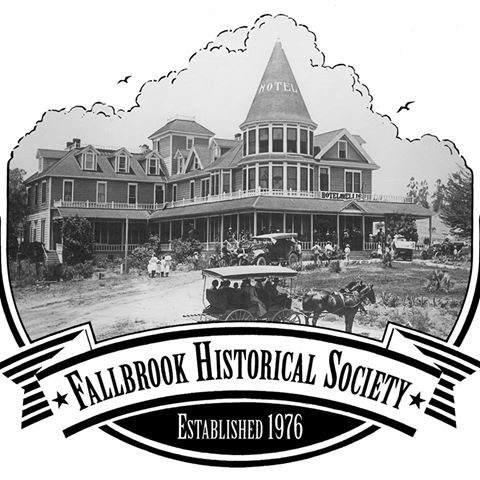The 1895 Pittenger House on the Fallbrook Historical Society Museum grounds is surrounded by a number of unique trees.

In the above photo, a Strawberry Tree (Arbutus unendo) stands in the foreground. Planted here in the late 1990s in memory of Robert J. Morse (1922-1997). Morse was a grandson of the pioneer Stewart family. He was also a director of the Fallbrook Historical Society.
The fruit of this tree is edible, but you may not like the taste. These are not true strawberries. Native to the Mediterranean area of northern Africa and southern Europe, the tree gets its name for the strawberry like appearance of its fruit.
Behind the Strawberry tree near the north porch of the Pittenger house, is a mature Camella Tree that was already growing here when the Historical Society purchased this property from the Griffen family in 1981.

On the southwest side of the Pittenger House is a lone old olive tree. How long it has stood here is not known. Olive trees can live hundreds of years with little care. The original homesteaders of this property, the Neff family, in the 1870s had their home and orchards further downhill by today’s Mission Road where more water was available. Did the Griffens plant this olive tree, or could it possibly be a relic from Pittenger’s time?
The outhouse building seen next to the olive tree came from Arthur Sample’s ranch which in the 1910s was on today’s Iowa Street.

Behind the rear southside porch of the Pittenger House is a 40-foot Peruvian apple cactus (Cereus repandus), that is native to South America. The apple cactus fruit is edible and reportedly quite tasty. Considering that this plant can possibly grow several feet per year, it is appears to be only 20 years old
(Pomegranate tree photo)

Several other oak and citrus tree varieties surround the 128-year-old Pittenger House, including a pomegranate tree (Punica granatum) by the south fence whose twisted trunk resembles a bonsai tree.
Tom Frew,
FHS Historian
